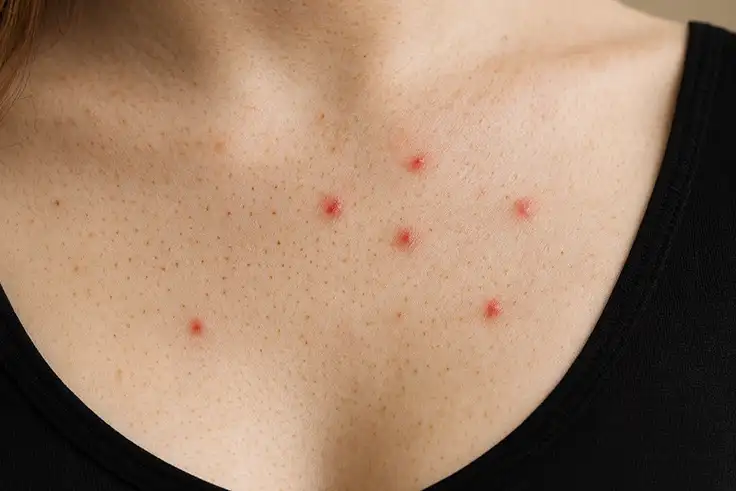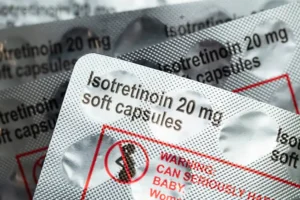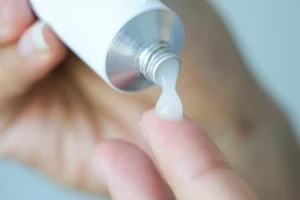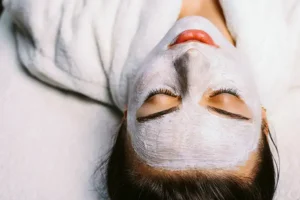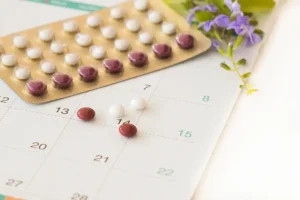Chest acne can be painful, uncomfortable, and hard to hide. It often shows up when you least expect it — during summer, after workouts, or when your skincare routine changes.
While it is easy to confuse chest acne with irritation or heat rash, true acne here has distinct causes and needs a targeted approach. Once you understand what is driving it, chest acne becomes much easier to treat and prevent.
What Causes Chest Acne
Chest acne happens when pores on your chest get clogged with oil, sweat, and dead skin cells. This combination creates a perfect environment for Cutibacterium acnes bacteria to grow, leading to inflammation and breakouts.
Common triggers include:
-
Sweat and heat: Moisture trapped under clothing can clog pores.
-
Tight clothing: Compression tops or synthetic fabrics create friction that irritates the skin.
-
Body care products: Heavy lotions, sunscreens, and oils can block pores, especially if they are not labeled non-comedogenic.
-
Hormones: Hormonal changes can increase oil production on the chest and back.
-
Lack of exfoliation: Dead skin buildup can trap oil and bacteria, causing clogged pores and rough texture.
How to Tell It Is Acne and Not Something Else
Not every bump on the chest is acne. Sometimes it can be folliculitis (inflamed hair follicles), fungal acne (yeast overgrowth), or heat rash.
Here is how to tell the difference:
-
Acne: Red or white bumps that can be tender and inflamed.
-
Folliculitis: Small, itchy bumps around hair follicles, sometimes with a white center.
-
Fungal acne: Tiny, uniform, itchy bumps that often appear in clusters and worsen with heat.
If you are unsure, a dermatologist can confirm the cause and recommend the right treatment.
How to Treat Chest Acne
The chest area is more delicate than the back but still benefits from consistent acne care. The key is gentle cleansing and exfoliation.
1. Use an acne-fighting body wash
Choose a cleanser with salicylic acid or benzoyl peroxide. These ingredients unclog pores, fight acne bacteria, and reduce inflammation. Wash daily, especially after sweating.
2. Exfoliate regularly
Use a mild chemical exfoliant, like a BHA or lactic acid body lotion, two or three times a week. This removes buildup and keeps pores clear. Avoid harsh scrubs that can irritate the skin.
3. Apply topical treatments
-
Salicylic acid: Clears clogged pores and smooths texture.
-
Benzoyl peroxide: Reduces acne-causing bacteria and prevents new pimples.
-
Retinoids: Regulate skin turnover and fade acne marks.
4. Moisturize lightly
Use a lightweight, oil-free moisturizer to restore the skin barrier and prevent dryness caused by acne products.
5. Shower right after workouts
Sweat and tight clothing can trigger new breakouts, so rinse your skin clean as soon as possible after physical activity.
Lifestyle Habits That Help
-
Wear loose, breathable fabrics like cotton.
-
Wash workout clothes and sports bras often.
-
Avoid thick lotions or fragranced body oils.
-
Keep long hair off your chest if it tends to be oily.
-
Use non-comedogenic sunscreen to prevent clogged pores.
These simple adjustments help minimize friction, heat, and trapped sweat — three major triggers for chest acne.
When Chest Acne Might Be Hormonal
If your chest acne feels deep, sore, or flares up in cycles, hormones may be involved. Hormonal changes increase oil production and make pores more likely to clog. Stress also raises cortisol, which can worsen inflammation.
If over-the-counter treatments are not helping, a dermatologist may suggest prescription-strength retinoids, antibiotics, or hormonal therapy such as birth control or spironolactone.
How to Prevent Future Breakouts
-
Cleanse your chest every day and after workouts.
-
Exfoliate one or two times weekly with a gentle chemical exfoliant.
-
Avoid heavy, pore-clogging lotions or sunscreens.
-
Wash sheets, pillowcases, and gym gear often.
-
Do not sleep in sweaty clothing.
-
Keep your hands and phone away from acne-prone areas.
Consistency is key. With the right care, most people see visible improvement in about four to eight weeks.
FAQs About Chest Acne
Can chest acne leave scars or dark spots?
It can. Because the chest skin is thinner and often exposed to friction, it is more prone to post-inflammatory hyperpigmentation and mild scarring. Using SPF daily and gentle chemical exfoliants like lactic acid can help fade marks faster.
Can I use my facial acne products on my chest?
Yes, but start slowly. Many face products like salicylic acid, retinoids, and benzoyl peroxide can work well on the chest. However, use lower concentrations and apply sparingly to avoid irritation or dryness.
Is chest acne more common in men or women?
Both experience it, but the causes differ. Men often get chest acne from sweat, thick body hair, or tight gym wear. In women, hormonal fluctuations and certain cosmetic or body products play a bigger role.
What is the best sleeping position to avoid chest acne?
Sleeping on your back helps reduce friction and sweat buildup across the chest. Avoid lying directly on the stomach or side if possible, and change pillowcases regularly to keep bacteria and oil from transferring to the skin.
Can stress cause chest acne?
Yes. Stress increases cortisol levels, which raise oil production and inflammation. This can lead to acne flare-ups not only on the face but also on the chest, shoulders, and back.
Does body hair affect chest acne?
Body hair can trap sweat and bacteria near the pores, especially if combined with tight fabrics. Shaving or waxing may also cause irritation. Keeping the area clean, dry, and exfoliated helps prevent buildup and inflammation.
Are there any professional treatments for chest acne scars?
Yes. Dermatologists can use chemical peels, microneedling, or laser therapy to fade discoloration and smooth rough texture. These treatments are especially effective for old marks or mild atrophic scars.

